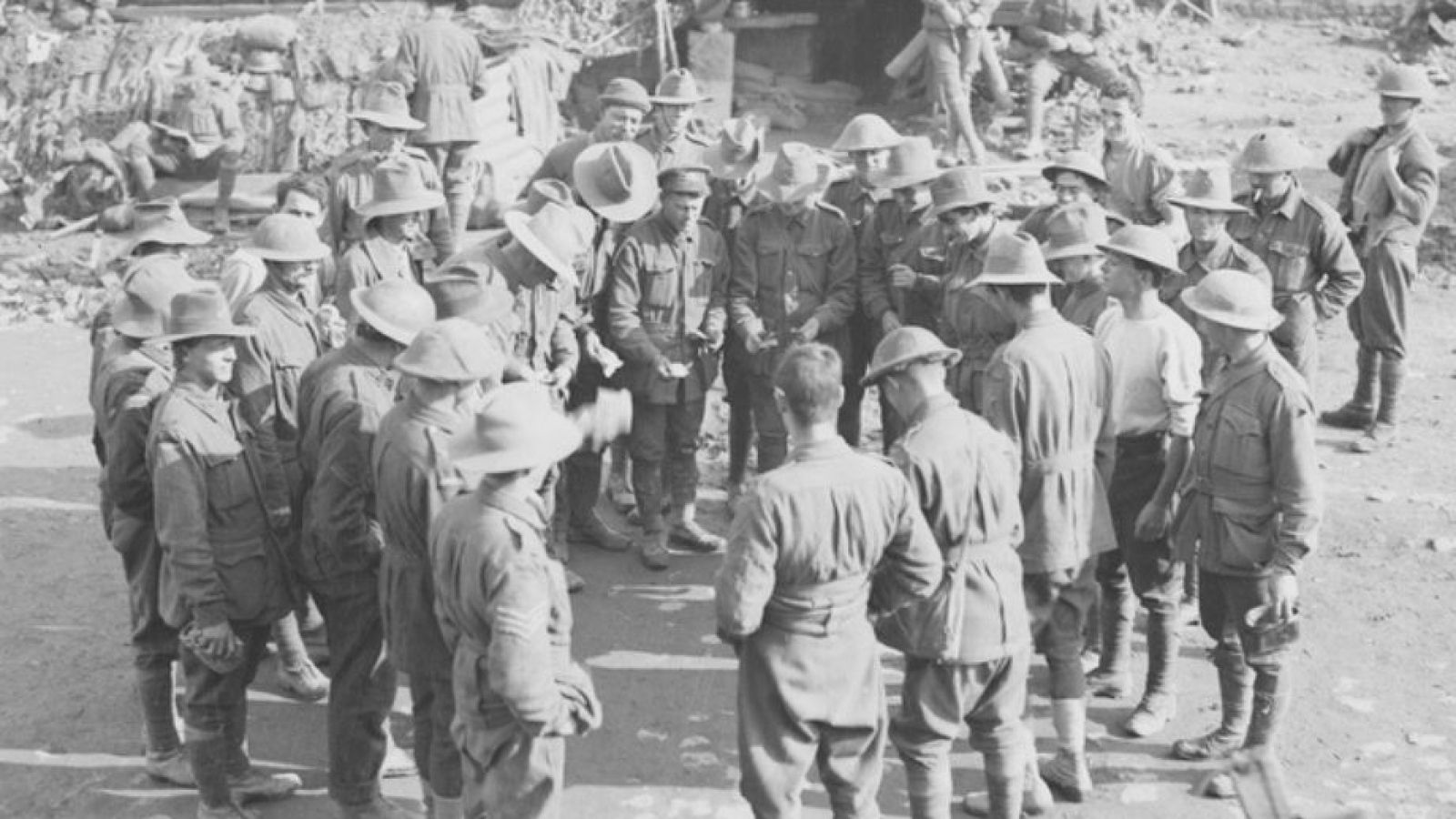Come in Spinner: two-up’s unusual language explained

A group of unidentified Australians behind the ruins of Ypres playing two-up in 1917. Image: Australian War Memorial (E01199)
Why is the wooden paddle used to toss the coins in two-up called a kip?
Why should you be on the lookout for illegal nobs, jacks, and greys?
Why is the person who runs the two-up game called the boxer?
What can you expect if you meet a cockatoo or a nit-keeper?
These are just of a few of the 140 unique words and phrases explained by Honorary Associate Professor at The Australian National University (ANU) Bruce Moore in a new book on the history and language of two-up.
According to Associate Professor Moore, two-up is an important part of Australia's cultural history.
"The cultural importance of the game has much to do with the association between two-up and the development of the Anzac legend," he said.
"Two-up was played widely during the First World War and after the war it became an integral part of the memory and commemoration of the experience of war.
"Returned soldiers played two-up after the Anzac Day march, especially because it memorialised and recreated the camaraderie and mateship that had helped them to survive the horrors of wartime experience."
Although we now think of the phrase come in spinner as essential to two-up, the phrase did not become part of the game until the Second World War.
Before that, the coins were spun after the call of fair go.
"The book explains how the phrase fair go first appears in the context of the Queensland shearers' strikes in the 1890s, and about the same time becomes a central term in the game of two-up," Associate Professor Moore said.
"As the same time as the workers were demanding fairness in their wages; those played two-up celebrated its status as the fairest of gambling games."
While there has been much uncertainty about the origins of two-up, the book presents new evidence of similar games in northeastern England and in Ireland.
"Many features of the game, especially the small wooden kip that is used to toss the coins, are likely to have originated in Dublin," Associate Professor Moore said.
Come in Spinner: A History of Two-up and Its Language is published by Australian Scholarly Publishing
Dr Bruce Moore was director of the Australian National Dictionary Centre at ANU from 1994 to 2011, and this book draws on the important and continuing research of the Centre into the history of Australian English. He edited the second edition of the Australian National Dictionary, and his books include Speaking Our Language: The Story of Australian English. He is an Honorary Associate Professor in the School of Literature, Languages and Linguistics.